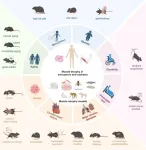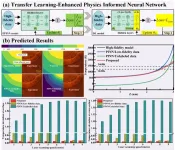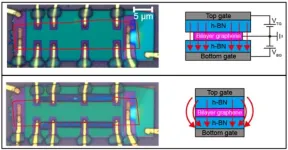(Press-News.org) T cells can independently prevent acute viral infections to an extent previously thought only possible with neutralising antibodies.
Findings challenge the longstanding reliance on neutralising antibodies for assessing viral immunity, and suggest that development of future vaccines must consider both antibody and T-cell responses for comprehensive protection.
Singapore, 10 January 2025—Scientists from Duke-NUS Medical School and the Singapore General Hospital have discovered that T cells—white blood cells that can destroy harmful pathogens—can completely prevent viral infection, to an extent previously thought only possible due to neutralising antibodies. Their findings, shown experimentally for the first time in human studies, reshape our understanding of how our immune system works, paving the way for the design of more effective vaccines.
Traditionally, scientists have considered neutralising antibodies (proteins that prevent viruses from entering cells) as the ultimate form of protection against viral diseases. These antibodies bind to viruses to prevent them from infecting cells, such that clinical and lab investigations would find no trace of infection. Such a level of protection is referred to as sterilising immunity. But these latest findings, published in Nature Microbiology, challenge this view, demonstrating that T cells are also capable of controlling viral infection entirely to untraceable extents, even without any neutralising antibodies.
In the study involving 33 healthy adult volunteers aged 21 to 45, scientists employed a cross-vaccination approach by administering a live-attenuated yellow fever vaccine followed by a challenge 28 days later, with a weakened Japanese encephalitis virus, and vice versa. Yellow fever and Japanese encephalitis are genetically related viruses. The weakened strains were not capable of causing disease in the volunteers, but were sufficient to result in mild symptoms and measurable levels of virus in the blood, as well as an immune response necessary for protection. The study was conducted at the SingHealth Investigational Medicine Unit in Singapore from 30 March to 31 Oct 2023.
As the Japanese encephalitis vaccine was constructed using the backbone of the yellow fever vaccine, inoculation with either one of the vaccines generates T cells that are effective against both viruses, but stimulates production of neutralising antibodies that are ineffective against the virus used in the human challenge study. This allowed the scientists to assess how well the T-cells, independent of neutralising antibodies, were able to control the infection.
The results showed that T cells from yellow fever vaccination controlled the Japanese encephalitis vaccine virus challenge infection, reducing both viral loads and antibodies produced. Moreover, when present in high enough levels after vaccination, T cells controlled the challenge infection to undetectable levels in 15 per cent of study participants, to the point that no new antibodies were formed following infection.
Professor Ooi Eng Eong, from Duke-NUS’ Emerging Infectious Diseases Programme and lead author of the study said:
“We found that T cells can serve as the first line of defence, not just a supportive element in protecting us from acute viral diseases. These findings challenge the current paradigm that antibodies are absolutely vital for protection against acute viral infection. Measuring antibodies alone without considering T cells could underestimate herd immunity—when sufficient numbers of individuals in a population are already protected against specific viruses either through vaccination or previous infections—which is one of the considerations in developing policies on vaccine dosage and frequency.”
Historically, vaccine development has prioritised generating elevated levels of antibodies. This approach may not only limit the efficacy of vaccines but could also hinder our ability to combat variants that escape antibodies but not T cells.
Assistant Professor Shirin Kalimuddin is a Senior Consultant with the Department of Infectious Diseases at the Singapore General Hospital and a faculty member of the Emerging Infectious Diseases Programme at Duke-NUS. The first author of the study said:
“We need to rethink how we design and develop vaccines. Vaccines that generate high levels of antibodies do not necessarily generate high levels of T cells. Development of vaccines must incorporate the viral components that T cells recognise and react against. Indeed, our findings may explain why some vaccines offer better protection against viruses when they are able to trigger a broader T cell response.”
Professor Patrick Tan, Senior Vice-Dean for Research at Duke-NUS, added:
“The study findings encourage us to integrate both antibody and T-cell responses to create more effective and comprehensive vaccines. By understanding the unique roles T cells play, especially in viruses like yellow fever, dengue and Zika, all of which are from the same family and could pose a public health threat in Singapore due to Aedes mosquito transmission, we can develop vaccines that target a wider range of viral strains and mutations to control such untreatable diseases.”
Next, the scientists aim to study why certain individuals develop higher T-cell responses to vaccination than others.
Duke-NUS is a leader in medical education and a biomedical research powerhouse, combining basic scientific research with translational knowledge to better understand human biological systems, as well as develop new treatments and vaccines for common diseases affecting millions of people in Singapore and Asia.
###
DOI: 10.1038/s41564-024-01903-7
END
A new study based on the sampling and analysis of volcanic ash at Cumbre Vieja volcano in the Canary Islands, located off Africa’s northwest coast, suggests that the composition of magma could drive tremors during volcanic eruptions. The findings, which are detailed today in the journal Nature Geoscience in a paper led by scientists at the American Museum of Natural History and the City University of New York (CUNY), highlight the potential of volcanic ash analysis as a monitoring and forecasting tool.
“The volcano research community has gotten ...
A new study published in Advances in Atmospheric Sciences has found that ocean warming in 2024 has led to new record high temperatures. The ocean is the hottest it has ever been recorded by humans, not only at the surface temperature but also for the upper 2000 meters.
“The broken records in the ocean have become a broken record.” Said Prof. Lijing Cheng with the Institute of Atmospheric Physics at the Chinese Academy of Sciences. He led a team of 54 scientists from 7 countries and discussed how ...
In today’s world, telecommunications and global connectivity have witnessed an unprecedented increase, making intercultural communication an unavoidable reality. A concerning aspect of such communication is the element of cultural and linguistic diversity between people. However, there is very little consensus on whether cultural diversity truly matters in intercultural communications or if it simply promotes miscommunication.
“In academic literature, culture tends to be approached in a dichotomous stance, either through a lens of miscommunication or is considered an altogether irrelevant construct when it ...
A new analysis of U.S. mortality data reveals the disproportionate impact of traumatic brain injuries (TBI) on older adults, males and certain racial and ethnic groups.
The study, published in the peer-reviewed journal Brain Injury, provides a comprehensive analysis of TBI-related deaths across different population groups across the U.S. in 2021.
The findings indicate that suicides remain the most common cause of TBI-related deaths, followed by unintentional falls, and specific groups are disproportionately affected by these tragedies.
Men, in particular, were found to be most likely to die from a TBI – more than three times ...
Oral cancer is an increasingly prevalent disease worldwide, with over 300,000 new cases diagnosed each year. Among oral cancers, tongue cancer (TC) is the most common type and often carries a poor prognosis. Surgery combined with chemoradiotherapy is one of the main lines of treatment for high-risk cases of TC. However, recurrence rates are high since the tumors can reestablish themselves from only a few surviving cells. A few surviving cells are referred to as minimal residual disease (MRD).
Understanding the mechanisms behind MRD formation is paramount to improving treatment outcomes ...
With the intensification of global population aging, muscle atrophy, characterized by the loss of muscle mass and function, has become an important health issue affecting the elderly. Researchers have widely used various animal and cellular models to gain a deeper understanding of the pathophysiological mechanisms of muscle atrophy and develop effective treatment strategies (Figure 1). These models simulate human muscle atrophy through different induction methods, such as natural aging, gene editing, nutritional changes, physical activity, chronic wasting diseases, ...
Group Activity Recognition (GAR), which aims to identify activities performed collectively in videos, has gained significant attention recently. Existing GAR datasets typically annotate only a single Group Activity (GA) instance per sample, carefully selected from original videos. This approach, while precise, diverges significantly from real-world contexts, which often involve multiple GA instances. Moreover, single word-level annotations are insufficient to encapsulate the complex semantic information in GA, thereby constraining the expansion and ...
Researchers have developed a transfer learning-enhanced physics-informed neural network (TLE-PINN) for predicting melt pool morphology in selective laser melting (SLM). This novel approach combines physics-informed constraints with deep learning techniques, achieving superior accuracy, faster training times, and reduced computational demands. Published in Advanced Manufacturing, this breakthrough has significant potential to improve the efficiency of SLM processes, enable intelligent real-time process control, and enhance manufacturing quality.
Selective Laser Melting ...
In the quest to address contemporary health challenges and advance medical science, the concept of Holistic Integrative Medicine (HIM) emerges as a pivotal approach. This paradigm emphasizes the integration of medical knowledge and practices, advocating for a shift from traditional, fragmented medical models to a more comprehensive and human-centered system. HIM represents a conscious evolution in medical thought, aiming to align with the holistic needs of patients and the complex dynamics of health and disease. It underscores the importance of dimensionality reduction and differentiation as ...
Electron transport in bilayer graphene exhibits a pronounced dependence on edge states and a nonlocal transport mechanism, according to a recent study led by Professor Gil-Ho Lee and Ph.D. candidate Hyeon-Woo Jeong of POSTECH’s Department of Physics, in collaboration with Dr. Kenji Watanabe and Dr. Takashi Taniguchi at Japan’s National Institute for Materials Science (NIMS). The findings were published in the international nanotechnology journal Nano Letters.
Bilayer graphene, comprising two vertically stacked graphene layers, can exploit externally applied electric fields ...









